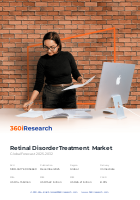
Retinal Disorder Treatment Market by Treatment Modality (Pharmacotherapy (Drugs), Devices & Instruments), Route Of Administration (Intravitreal Injection, Oral, Subretinal), Disease Indication, End User, Distribution Channel - Global Forecast 2025-2032
SKU
MRR-CA17E905E6E9
Region
Global
Publication Date
December 2025
Delivery
Immediate
2024
USD 14.15 billion
2025
USD 15.22 billion
2032
USD 26.21 billion
CAGR
8.01%

Download a Free PDF
Get a sneak peek into the valuable insights and in-depth analysis featured in our comprehensive retinal disorder treatment market report. Download now to stay ahead in the industry! Need more tailored information? Ketan is here to help you find exactly what you need.



